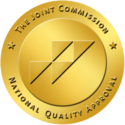Dealing With Someone With PTSD and Addiction: A Guide
Addiction, also known as substance use disorder (SUD), and post-traumatic stress disorder (PTSD) are both chronic disabling conditions that often co-occur. People who have co-occur SUD and PTSD have to face a more complicated course of treatment and tend to have less favorable treatment results compared to people with one or the other disorder alone.

PTSD is a mental health disorder that arises after experiencing a traumatic event. The individual may experience the event directly, witness a traumatic event, or have it happen to someone close to them.
Examples of traumatic events include:
- Car or plane crashes
- Terrorist attacks
- Military combat
- Personal assaults
- Abuse
- Natural disasters
- The sudden death of a loved one
- Rape
- Kidnapping
Not everyone will develop PTSD after experiencing a traumatic event. There are a variety of factors that may affect whether or not someone develops it. In general, 3.5% of adults in the United States have PTSD. However, this rate is higher among people whose occupations increase the risk of exposure to traumatic events such as:
- Emergency medical personnel
- Firefighters
- Police, and
- Military veterans
Symptoms of PTSD
Several symptoms must show up after a traumatic event for an individual to be diagnosed with PTSD. They are:
At least 1 must be present.
- Involuntary, repeated, and troubling memories of the event
- Constant oppressive dreams about the event
- Flashbacks where the person acts or feels like the event is reoccurring
- Long-lasting or intense mental distress after being exposed to things that remind them of the event
- Physical reactions to reminders of the traumatizing event
At least 1 avoidance symptom must be present.
- Avoiding thoughts, memories, or feelings that relate to the event
- Avoiding any reminders, such as activities, people, places, discussions, objects, or situations that create memories, feelings, or thoughts that relate to the event
At least 2 adverse changes in cognition and mood must be present.
- Loss of ability to remember key parts of the trauma
- Constant, incorrect negative beliefs about oneself, other people, or the world
- Constant, erroneous beliefs about the cause or consequences of the traumatic event
- Persistent negative emotional condition
- Significantly reduced participation or interest in activities
At least 2 observable symptoms must be present.
- Anger and irritability
- Self-destructive or reckless behavior
- Hypervigilance (an exaggerated fear of danger)
- Easily startled
- Difficulty concentrating
- Problems sleeping
Some combination of these symptoms must be evident for at least 1 month for a person to meet the standards for a PTSD diagnosis. Additionally, the symptoms must affect important areas of functioning such as:
- School
- Work
- Maintaining relationships with others
- Taking care of themself
Last, the symptoms must not be caused by other factors such as substance abuse or another medical condition.
What Causes PTSD?
When a person experiences a stressful event, their nervous system reacts with the “fight-or-flight “ response. The heart pounds, faster, blood pressure rises, and the muscles tighten, increasing strength and reaction speed. After the danger passes, the nervous system calms the body, lowers the heart rate and blood pressure, and gradually returns to its normal state.
PTSD happens when the person’s situation causes too much stress. Even when the danger has passed, their nervous system seems to be stuck and unable to return to its normal balanced state. The individual is unable to move on from the event.
After a traumatic event, most people will experience some of the symptoms of PTSD. This is a normal reaction to an abnormal event. And for most people, the symptoms have a duration of several days or even weeks but they gradually recede. For people suffering from PTSD, the symptoms don’t decrease and they don’t feel a little better each day. The fact is, they may feel worse.
Contact Eagle Creek Ranch
Recovery Today!
Why Wait? Find The Help You Need By Reaching Out To Us Today! Our Admissions Team Is Standing By.
Understanding Substance Abuse
Substance use disorders (SUDs) are also a treatable mental disorder that affects an individual’s brain and behavior. This can lead to them not being able to control their use of the substance. Symptoms of SUD may be moderate to severe. Addiction is the most severe form of SUD.
An individual with SUD might:
- Have difficulty controlling their use of the substance
- Need to use increasingly larger amounts of the substance
- Experience withdrawal symptoms when stopping use or cutting down
- Keep using the substance despite negative consequences such as job loss, relationship problems, legal problems, and financial problems
Why Do People Turn to Substances?
Although several theories have been put forward to explain the typical appearance of SUD and PTSD, the self-medication theory has received the most practical support. Research has indicated that almost half (46.4%) of people with PTSD also meet the criteria for SUD. Further support for this theory has been collected by studies showing that PTSD usually emerges before co-occurring substance use disorders. Factors that may influence the development of co-occurring PTSD and SUDs include:
Using substances to relieve symptoms of PTSD is called self-medicating. Unfortunately, people who self-medicate believe that they are relieving their PTSD symptoms, but they are creating more problems. Some of the symptoms of drug withdrawal may resemble the symptoms of PTSD including:
- Sleep disturbances
- Lack of concentration
- Feelings of irritability and detachment
The individual may then start to use the substance again to relieve these symptoms. This begins a reinforcing cycle that may lead to addiction.
Another explanation for why people with PTSD become addicted is the high-risk theory. This theory implies that the lifestyle of people who use substances may involve spending time in dangerous environments or taking part in high-risk behaviors. This increases the likelihood that they will experience a traumatic event.
Abnormalities in certain areas of the brain that are shared by family members who abuse substances along with exposure to traumatic stressors.
Dual Diagnosis and Treatment
When a person has a SUD and another mental health disorder, such as PTSD, it is known as a dual diagnosis. It’s best to treat them at the same time rather than separately, preferably by the same treatment team. It can be a challenge to make an accurate diagnosis because some symptoms are the same for both disorders so a comprehensive assessment helps reduce the chance of a missed diagnosis and provide the right treatment. It is also essential for the provider to customize treatment for the individual’s combination of disorders and symptoms. Treatment may include behavioral therapies and medications.
Researchers have found that behavioral therapies are effective in treating people with co-occurring substance abuse and PTSD. Healthcare professionals may suggest behavioral therapies alone or combined with medications. Some effective behavioral therapies include:
- Cognitive Behavioral Therapy (CBT)–CBT is a type of talk therapy that challenges a person’s irrational thoughts intending to learn how to cope with difficult circumstances and change behaviors.
- Therapeutic Communities (TC)–TCs are a common type of long-term residential treatment. It concentrates on helping the individual develop healthier attitudes, values, and behaviors.
Prolonged Exposure (PE)–PE is a highly effective, evidence-based therapy used to treat PTSD. Current literature suggests that treating co-occurring PTSD and SUD is acceptable, safe, and effective.
Even though exposure-based methods are effective in reducing PTSD, some healthcare providers are hesitant to use exposure-based methods among people with a co-occurring SUD. Non-exposure-based treatments focus on psychoeducation, improving coping skills, managing negative emotions, and examining the effect of trauma symptoms.
Depending on the SUD, medications may be prescribed to treat withdrawal symptoms and prevent relapse. Antidepressants have proved to be effective when prescribed to treat PTSD.
7 Tips for Dealing With Someone With PTSD

It isn’t easy to live with someone with PTSD and you may feel hurt by your loved one’s moodiness and distance. But it’s important to realize that a person with PTSD might not have control over their behavior. Their nervous system is stuck in a state of constant alert, reliving the traumatic event over and over. However, with support, their nervous system can become unstuck. With these tips, you can help them move on:
It’s common for people with PTSD to isolate themselves from friends and family. Although you should respect their boundaries, your comfort, and support can help them overcome feelings of helplessness and despair. For people with PTSD, family support is vital. Trauma experts believe that face-to-face support from others is the most important element in recovery from PTSD.
Don’t push them to talk but if they do, make it clear that you’re interested and that you care. However, don’t worry about giving advice. Your loved one may want to talk about the traumatic event over and over and it may be hard to listen to. When dealing with someone with PTSD, listening attentively is what is helpful, not what you say.
Trauma changes the way a person views the world and damages their ability to trust others and themselves. Let them know that you are committed to the relationship in the long term so they feel loved and supported. Also:
- Create routines and structured schedules
- Minimize stress by providing time for rest
- Keep your promises
- Build self-confidence by giving them more choices and control
Any person, place, thing, or situation that reminds your loved one of the trauma is a trigger that can set off a PTSD symptom. Communicate with your loved one about their PTSD triggers and devise a game plan to respond to them in the future.
People with PTSD are in a constate of emotional and physical stress. For many people, anger can be a cover for other feelings such as grief, guilt, or helplessness. It’s typical for them to overreact to everyday stress. You can help handle this by:
- Watching for signs that they’re angry
- Remaining calm
- Giving them space
- Asking how you can help
- Helping them learn how to manage their anger.
Although your love and support are important, they may not be enough. Wait for the right time to bring up the idea of therapy–not in the middle of a crisis. Here are some ideas:
- Avoid anything that implies they’re “crazy”
- Emphasize the benefits of therapy–independence, control, etc.
- Concentrate on specific issues like anger management or anxiety
- Accept that therapy has its limitations
- Get help from other people that you loved one respects or trusts
- Encourage joining a support group
Don’t allow your loved one’s PTSD to dominate your life. Ignoring your own needs is a guaranteed recipe for burnout. To have the strength to help your loved one over the long term and reduce your risk for secondary traumatization you should:
- Take care of your own physical needs by getting enough sleep, exercising, eating properly, and taking care of medical needs
- Build your support system
- Take time for your own life
- Ask for help from other family members and friends
- Set boundaries on what you’re capable of doing
Finding Hope at Eagle Creek Ranch Recovery
There is hope for successful treatment of co-occurring PTSD and SUD. Eagle Creek Ranch in Idaho can provide your family member with effective, safe, and proven treatment methods for this dual diagnosis. Dealing with someone with PTSD takes a toll on everyone. And because we know that this affects the entire family, we provide family therapy for all family members who wish to take part.
The professionals at Eagle Creek are experienced in helping men suffering from trauma and substance use disorders. As a men-only facility, we can focus on men’s issues and obstacles to recovery. Don’t let it go any longer. Contact us today.

Clinical Director
Kendall Maloof is the clinical director at Eagle Creek Ranch Recovery. She is a licensed marriage and family therapist and has held multiple leadership roles before settling here at Eagle Creek. Kendall received her master’s degree in marriage and family therapy from the Chicago School of Professional Psychology in 2016. Her career in mental and behavioral health began in 2014 when she took up internships in both the nonprofit and for profit sectors. She interned at multiple reputable companies, such as The Living Success Center and 449 Recovery in California.
In 2019, Kendall became the clinical director of Sunsets Recovery for Woman, a dual diagnosis program in southern California. Kendall is a natural leader. She has an incredible ability to problem solve and stay calm in any situation. Kendall never fails to show up when she is needed, and her calm demeanor makes her team and clients feel at ease. Eagle Creek Ranch Recovery is proud to have Kendall as our clinical director.


